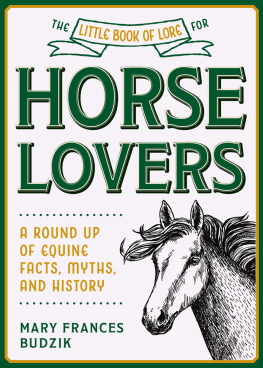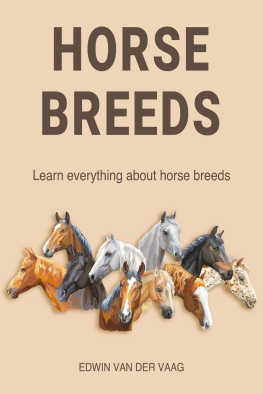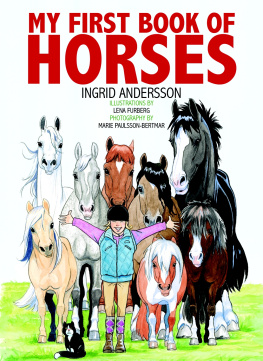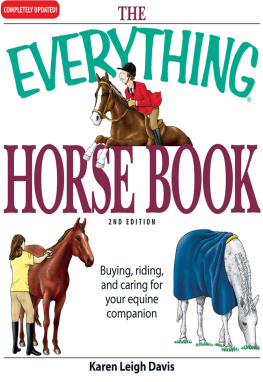


First Skyhorse Publishing edition
Toucan Books Ltd. 2021
All rights reserved. No part of this book may be reproduced in any manner without the express written consent of the publisher, except in the case of brief excerpts in critical reviews or articles. All inquiries should be addressed to Skyhorse Publishing, 307 West 36th Street, 11th Floor, New York, NY 10018.
Skyhorse Publishing books may be purchased in bulk at special discounts for sales promotion, corporate gifts, fund-raising, or educational purposes. Special editions can also be created to specifications. For details, contact the Special Sales Department, Skyhorse Publishing, 307 West 36th Street, 11th Floor, New York, NY 10018 or .
Skyhorse and Skyhorse Publishing are registered trademarks of Skyhorse Publishing, Inc., a Delaware corporation.
Visit our website at www.skyhorsepublishing.com.
10 9 8 7 6 5 4 3 2 1
Library of Congress Cataloging-in-Publication Data is available on file.
Cover design by Daniel Brount
Cover illustration from Getty images
Print ISBN: 978-1-5107-6293-0
Ebook ISBN: 978-1-5107-6294-7
Printed in China
CONTENTS


CHAPTER 1
The Horse
The domesticated horse has played an important part in human civilization for thousands of years. Thanks to the unremitting labor of these animals, fields were plowed, wars were fought, and travel by landfrom across the farm to across the continentbecame possible. Yet horses did not evolve with human concerns in mind! Primitive horses were herd animals happy to graze the days away on the Asian steppes. As prey animals, their inborn instinct is to flee predators, such as ourselvesyet over the centuries, such a rapport between our two species has been established that communication between horse and rider can be achieved by the subtlest of signals.

THE HORSES VITAL SIGNS

STARTLING FACTS ABOUT THE HORSE FAMILY

 A horses stomach holds only 24 gallons (7.515 liters) at a time.
A horses stomach holds only 24 gallons (7.515 liters) at a time.
 The equine small intestine is about 70 feet (21.3 m) long. (A humans is about 21 feet/6.4 m long.)
The equine small intestine is about 70 feet (21.3 m) long. (A humans is about 21 feet/6.4 m long.)
 A horses large colon can hold 2025 gallons (7595 liters).
A horses large colon can hold 2025 gallons (7595 liters).
 Horses cannot vomit or burp, nor are they able to breathe through their mouth.
Horses cannot vomit or burp, nor are they able to breathe through their mouth.
 Most horses have 175 bones in their bodies (see also box below).
Most horses have 175 bones in their bodies (see also box below).
 Standing at rest, the horse carries between 60 and 70 percent of its weight on its forelimbs.
Standing at rest, the horse carries between 60 and 70 percent of its weight on its forelimbs.
 Horses are the only animals (other than humans) who sweat through their skin.
Horses are the only animals (other than humans) who sweat through their skin.
 A horses uses up more energy when it is lying down than it does when standing.
A horses uses up more energy when it is lying down than it does when standing.
 Of all the worlds countries, China, Ethiopia, and Mexico have the largest populations of donkeys.
Of all the worlds countries, China, Ethiopia, and Mexico have the largest populations of donkeys.

ARABIAN BONES
Most breeds of horse have 18 ribs, 6 lumbar vertebrae, and 18 tail vertebrae, but Arabian horses have only 17 ribs, 5 lumbar vertebrae, and 16 tail vertebrae.
EQUINE FINGERPRINTS

W horls are spiral-shaped patterns of hair that can grow anywhere on a horse but are most commonly found on its face (often near the forehead) or neck. The Arabian Horse Association, the American Quarter Horse Association, and the Jockey Club (the Thoroughbred registry body) all record individual whorls as a means of identification for registered horses.
 No two whorls are alike, so they serve as an equine fingerprint.
No two whorls are alike, so they serve as an equine fingerprint.
 Bedouins, who were great horsemen, used whorls as a way of pricing their horses.
Bedouins, who were great horsemen, used whorls as a way of pricing their horses.
 Horse lore states that a horses character can be divined from the whorl pattern.
Horse lore states that a horses character can be divined from the whorl pattern.
 Linda Tellington-Jones, a highly respected American trainer and equine behaviorist, has developed a detailed association of personality traits with certain whorl patterns. For example:
Linda Tellington-Jones, a highly respected American trainer and equine behaviorist, has developed a detailed association of personality traits with certain whorl patterns. For example:
horses with a swirl between the eyes are likely to be uncomplicated
horses with a swirl beneath the eye are probably intelligent.
I bless the hoss from hoof to head
From head to hoof, and tale to mane!
I bless the hoss, as I have said,
From head to hoof, and back again!
JAMES WHITCOMB RILEY (18491916), AMERICAN POET
HOW MANY INCHES IN A HAND?
A horses height is given in handsone hand equals 4 inches (10 cm; the width of an average adults hand)and is measured from its shoulders (withers) to its feet. For example, if a horse measures 14.5 hands high (hh), it is 58 inches (147 cm) high.
GALVAYNES GROOVES

S ydney Groove Galvayne was a horseman of the nineteenth century who once demonstrated his equine skills to Great Britains Queen Victoria. Galvayne, an Irish-born Australian, made his name with a method of aging horses by evaluating a grooveknown today as Galvaynes Groovethat is found on the two corner incisors in the horses upper jaw.
This groove can be used to age horses from 10 to 30 years old. It first appears at the gum line of a horse at ten years old and moves down the tooth, year by year, as the tooth continues to emerge from the jaw. Up to 4 inches (10 cm) of tooth are embedded in the jawbone, and the tooth slowly grows out of the jaw throughout the horses life as the teeth are worn down by the grinding action of grazing. So a horse can be aged according to where Galvaynes Groove is on the tooth: at 20, the groove extends the full length of the tooth; by 25, it appears only in the lower half; and, by 30, it has disappeared.
Next page

















 A horses stomach holds only 24 gallons (7.515 liters) at a time.
A horses stomach holds only 24 gallons (7.515 liters) at a time.
